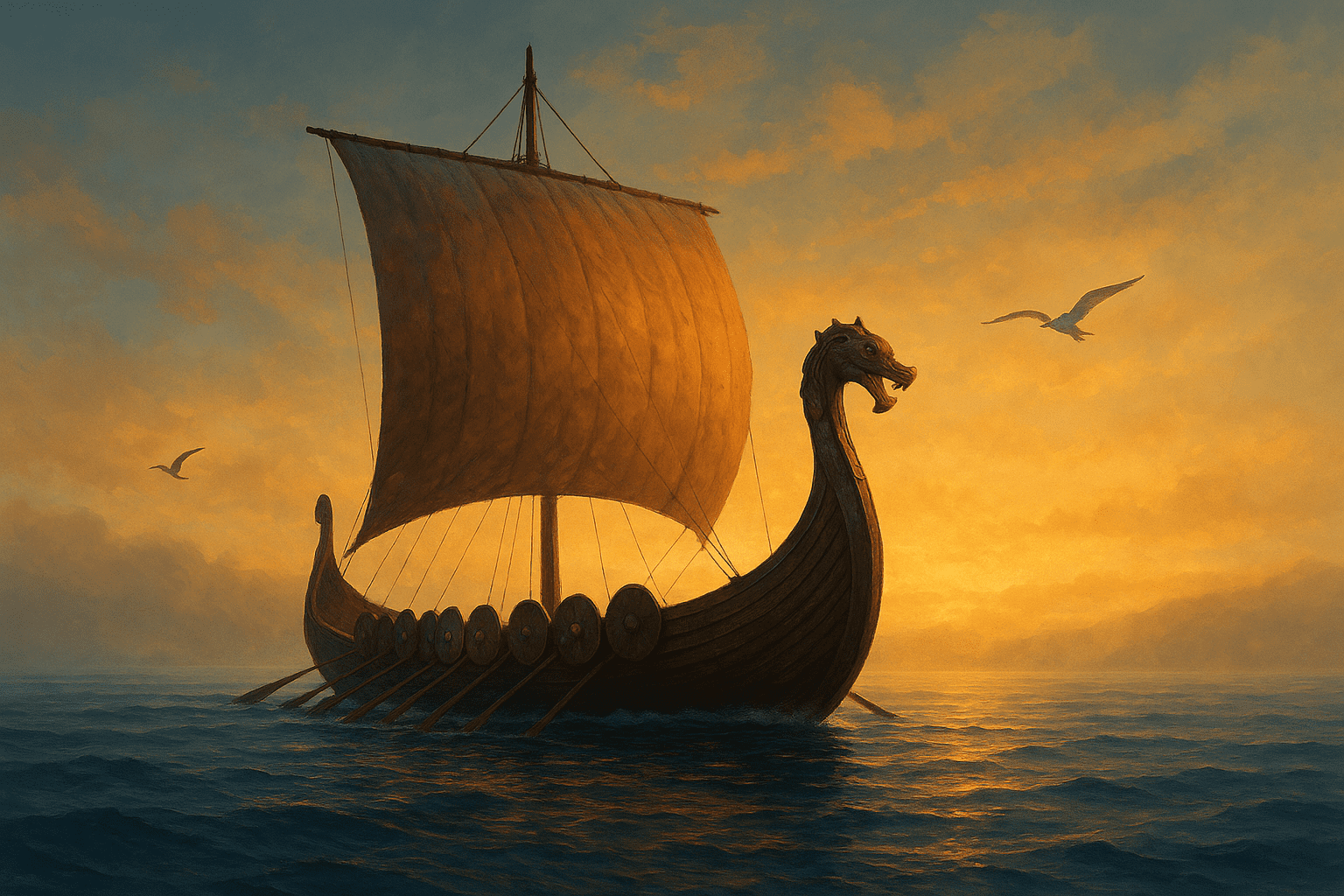Vikings: Warriors, Adventurers, and A Touch of Anarchy
You hear the name Vikings and immediately think about warriors with horned helmets riding into battle. Oh, sorry to disappoint you, but those horns are totally Hollywood-made. The actual Vikings were tough, okay, but their helmets were as dull as the plates on your dining table.
The Vikings were from Scandinavia (contemporary Norway, Denmark, and Sweden) and existed in the period surrounding the late 8th to early 11th century. They were not only warriors who enjoyed raiding; they were also ingenious explorers, merchants, and sailors. Actually, if frequent flyer miles were a thing back in those days, Vikings would have been at the top of the list—sailing from Greenland to North America long before Columbus arrived.
Not Just About Raiding Villages
The stereotype that all they did was burn villages and yell “Valhalla!” is a bit harsh. Yeah, they raided (and they were awfully good at it), but they also established settlements, traded in things like fur, amber, and even slaves, and made contact with numerous other cultures. Consider them to have been part-time warriors and part-time businessmen.
They were also good farmers. And let’s face it, even the most fearsome warrior needed to return to a bowl of stew and some bread. They had a surprisingly well-organized society with rules, meetings known as “Things”, and even women’s rights that were way in advance of their time. Viking women were allowed property and could demand a divorce—something even modern TV sitcom wives would applaud.
Ships That Ruled the Seas
One of the greatest things about the Vikings was their longships. Smooth, fast, and ideal for both deep oceans and shallow rivers, these boats were essentially the medieval sports cars. Just picture showing up in town in a Ferrari… with your Ferrari having a dragon head sculpted on the front and thirty guys rowing inside.
Due to these vessels, Vikings were able to go far and wide. They sailed to Iceland, Greenland, North America (Vinland), and even as far as the Middle East. The next time someone refers to them as “just raiders,” remind them that these individuals had superior travel arrangements than most people today.
Gods, Myths, and Valhalla
Religion was an important aspect of Viking culture. They had gods such as Odin, Thor, and Freyja, each with distinct personalities and abilities. Odin was the wise (and somewhat enigmatic) chief, Thor was the thunder-armed guardian, and Freyja was associated with love and beauty.
And of course, there was Valhalla, the hall of the slain, where the warriors hoped to arrive after death. Essentially, it was their idea of an after-party forever—drink, feast, and battle once more. Not a bad plan for retirement if you ask me.
Legacy of the Vikings
Although the Viking Age was over centuries ago, their legacy remains present with us. Dublin was a city established by Vikings. The words of English such as “window,” “knife,” and “husband” are derived from Old Norse. So the next time you refer to someone as your “husband,” you’re unwittingly taking a Viking loan word.
They also left behind fascinating sagas—stories of heroes, battles, and journeys that inspired modern books, movies, and TV shows. If you’ve ever binge-watched a Viking series and thought, “Wow, this is wild,” just know the real history wasn’t too far off.
Final Thoughts
The Vikings were not only ferocious fighters—they were also explorers, merchants, farmers, and tellers of tales. They shared a special culture, robust vessels, and a sense of adventure that drove them over seas and continents.
So the next time you envision a Viking, ditch the horned headgear. Instead, imagine a fearless seafarer piloting his dragon-headed longship into the unknown. And perhaps, perhaps even imagine him returning home later to monitor the farm and bicker with his wife over chores. Because even Vikings weren’t immune to domestic disputes.










